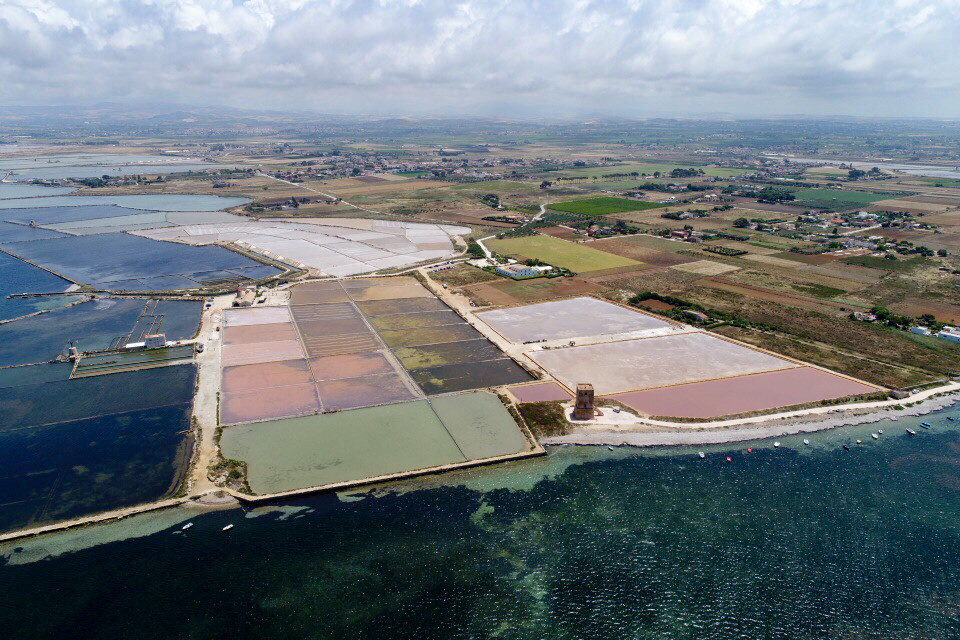Opis
The salt pans of Trapani and Paceco represent a remnant of nature that was rescued from urban expansion thanks to the establishment of the Reserve. In addition to being among the last remaining productive salt pans in Sicily, they are also a treasure trove of biodiversity, where production activities and nature conservation coexist. The salt pans of Saline di Nubia are part of the bigger reserve of Saline of Trapani and Paceco.
The Saline di Nubia are tucked away off SP 21 a little bit south from the city of Trapani. An industrial looking area with piles of salt along the side of the road. But if you drive further you come to a beautiful area of shallow lagoons and windmills. You can make stops along the road and on many parts there are narrow paths to explore the century old salt pans. Located between the salt pans is the Salt Museum of Nubia (Museo del Sale).
The salt pans are an important stopover for many European migratory birds before they fly across the Strait of Sicily to or from Africa. Among the birds you can encounter are flaming różowy, szczudłak, ohar, brodziec piskliwy, rybitwa białoczelna, mewa cienkodzioba, sieweczka morska, chwastówka zwyczajna and depending on the season many species of waders.
Szczegóły
Dostęp
The Saline di Nubia are located south from the city of Trapani. Click on a P in the map for directions.
Teren i siedlisko
Tereny podmokłe , MorzeWarunki
Płaski , Otwarty krajobrazTrasa dookoła
NieCzy luneta będzie przydatna ?
NieUdany sezon obserwacyjny
Przez cały rokNajlepszy czas na wizytę
Wiosenne migracje , Jesienne migracjeTrasa
Wąski szlakPoziom trudności szlaku pieszego
ŁatwyDostępne
PieszoCzatownia/platforma obserwacyjna
NieLinki
- wwfsalineditrapani.it
- www.salineculcasi.it
- Areal picture Saline di Nubia by Pannucci Stefano, CC BY-SA 4.0, via Wikimedia Commons



